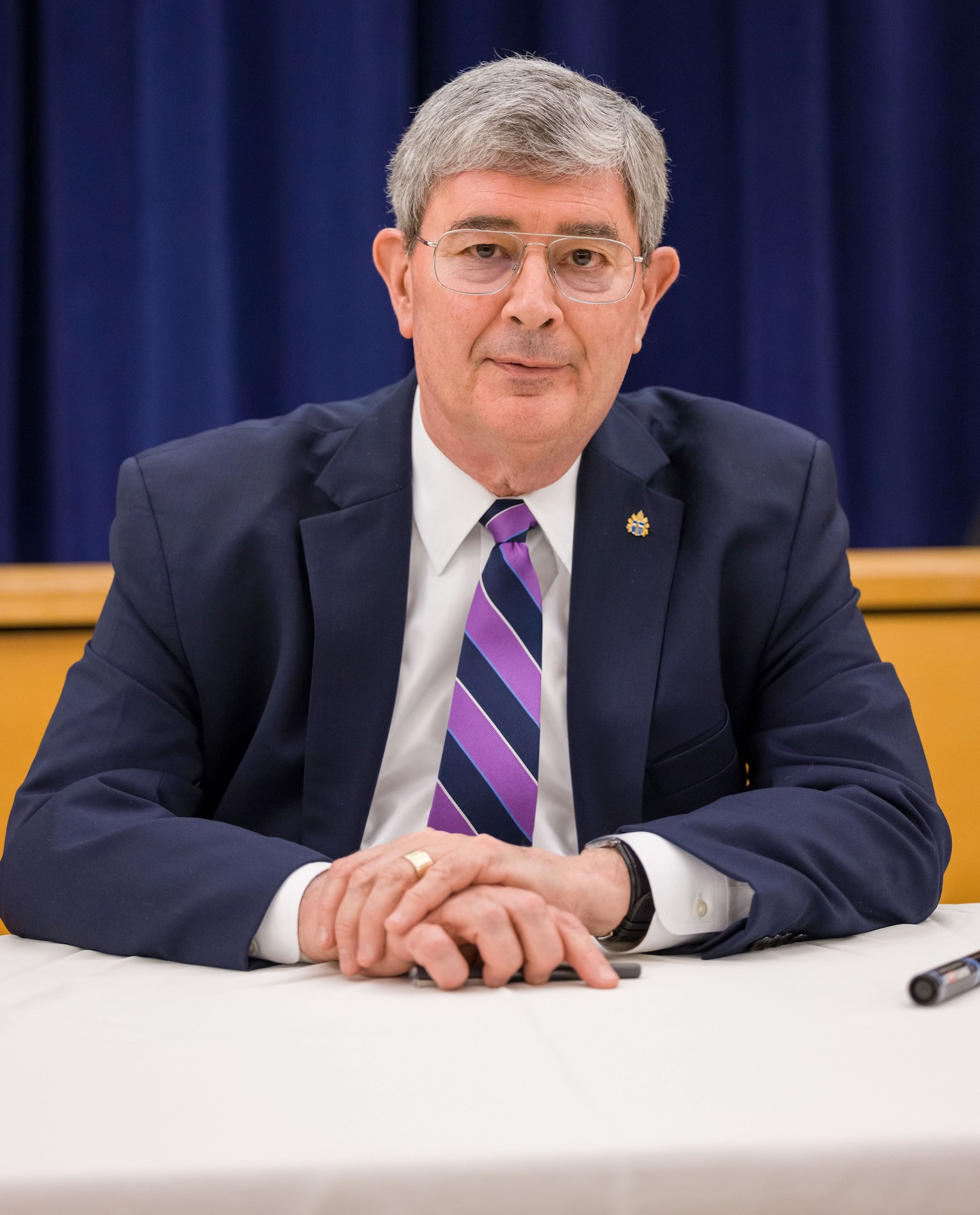In Jesus of Nazareth: Holy Week, Pope Benedict XVI remarked on the striking parallel between the presence of the holy women at the cross of Christ and their role in the first appearances of the Risen Lord:
Just as there were only women standing by the Cross—apart from the beloved disciple—so too the first encounter with the Risen Lord was destined to be for them. The Church’s juridical structure is founded on Peter and the Eleven, but in the day-to-day life of the Church, it is the women who are constantly opening the door to the Lord and accompanying him to the Cross, and so it is they who come to experience the Risen One.
This truth over the centuries is ably demonstrated by Bronwen McShea in her fine new book, Women of the Church: What Every Catholic Should Know. And no woman of our Catholic moment embodied this Christocentric fidelity—opening doors to Christ, accompanying him to Calvary, living in the joy of the Resurrection—more than Sr. Nijolė Sadūnaitė, who died, appropriately, on Easter Sunday, March 31.
A clandestine religious in Soviet-occupied Lithuania from the time she was eighteen, Sr. Nijolė helped create and distribute the Chronicle of the Catholic Church in Lithuania, a record of ongoing harassment, persecution, and martyrdom that had the honor of being the longest-running, uninterrupted dissident publication in the history of the U.S.S.R. Through surreptitious means, issue after issue of the Chronicle (which was produced in multiple copies on manual typewriters using ten sheets of carbon paper) was smuggled out of Lithuania to Europe and North America; it was then translated into various languages, to the intense aggravation of the masters of the multinational empire that was in truth a vast prison covering eleven time zones. So, one by one, the leading figures in the publication of the Chronicle were arrested by the KGB and sentenced to the Gulag camps. In 1975 Nijolė Sadūnaitė got three years of hard labor and three years of Siberian exile.
In the Gulag, she was tortured, imprisoned in a psychiatric hospital, and spent stretches in solitary confinement. In exile, she worked as a charwoman, having previously done manual labor in a factory and cared for abandoned children. All the while, she kept her religious consecration a secret from everyone except her family and a few close friends. Released from exile, she resumed her underground resistance activities. When the KGB came looking for her in 1982, she went underground for five years, during which she wrote a memoir of her prison camp experience, which was published in 1987 as A Radiance in the Gulag—an apt title for the reflections of a woman of infectious joy, remarkable energy, and unbroken spirit. During the Gorbachev thaw in the late 1980s, Sr. Nijolė, by then a national heroine, became publicly visible at the mass demonstrations that eventually led to Lithuania’s auto-liberation in 1990–1991.
From 1986 to 1987, I helped my friend Congressman John Miller (himself Jewish) form the bipartisan Lithuanian Catholic Religious Freedom Caucus in the U.S. House of Representatives. The caucus’s work, in collaboration with the Reagan administration, helped free two founders of the Chronicle from the Gulag, Fr. Alfonsas Svarinskas and Fr. Sigitas Tamkevičius, S.J. (later the archbishop of Kaunas and a cardinal). Those two white martyrs, as well as Sr. Nijolė, eventually made their way to Washington, where I had the honor of meeting each of them (as I did a second time during a moving reunion in Vilnius in 2013). On her visit to the nation’s capital, Sr. Nijolė wanted to visit Washington’s cathedral. Afterward, while standing in front of St. Matthew’s on Rhode Island Avenue, she suddenly took a pin with a stylized version of the Lithuanian national coat of arms from her handbag, affixed it to my suit jacket lapel, and gave me a great hug. I felt as if I, a civilian, had been decorated by a combat veteran.
Sr. Nijolė’s funeral Mass was celebrated in Vilnius’s Calvary Church with most of the country’s bishops present. At the end, there were spontaneous cries of Santo subito! (or its Lithuanian equivalent)—just as there had been after the funeral Mass of John Paul II, whom the underground nun, resistance hero, and Gulag survivor revered. I hope it happens, someday, that the Church recognizes the heroic virtues of Nijolė Sadūnaitė and canonizes her. I have no doubt, however, that in defending her and having been privileged to meet her, my life was touched by a saint, whose witness mirrored that of the holy women of Calvary and Easter.
George Weigel’s column “The Catholic Difference” is syndicated by the Denver Catholic, the official publication of the Archdiocese of Denver.

George Weigel is Distinguished Senior Fellow of Washington, D.C.’s Ethics and Public Policy Center, where he holds the William E. Simon Chair in Catholic Studies.
First Things depends on its subscribers and supporters. Join the conversation and make a contribution today.
Click here to make a donation.
Click here to subscribe to First Things.
Image by Diliff licensed via Creative Commons. Image cropped.



